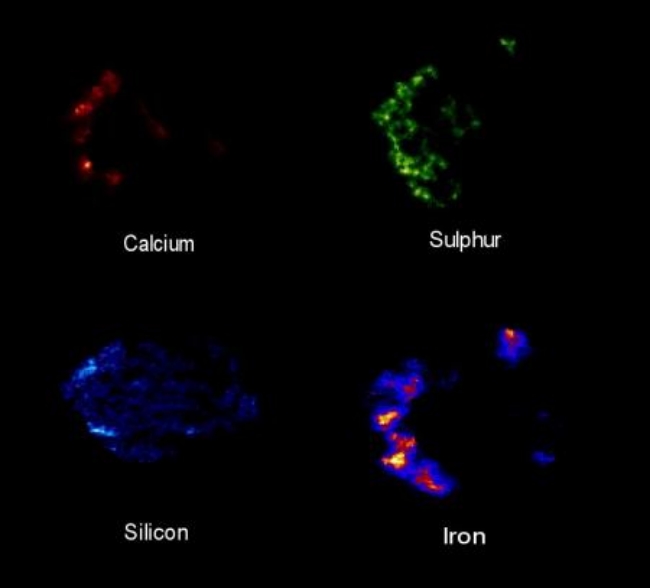
 Credit: Dr. B. Aschenbach & ESA; D. Lumb
Credit: Dr. B. Aschenbach & ESA; D. Lumb
Chemical Segregation in Tycho
Most chemical elements are cooked up in cores of very heavy stars, and
spread out into the Universe when these stars explode as supernovae. Now,
new X-ray observatories are giving astronomers the ability to see in detail
how this process works. An observation
of the Tycho supernova remnant (which was named after the Danish
astronomer Tycho
Brahe, who first studied the supernova which occurred in November 1572)
with the XMM-Newton
X-ray observatory enabled astronomers to determine the spatial
distribution of important elements. The images of the Tycho supernova
remnant shown above were obtained by XMM-Newton in the X-ray light of
silicon, calcium, sulfur and iron. Surprisingly these elements are not
distributed uniformly throughout the nebula, but instead are spatially
segregated. This indicates that different chemicals form in different parts
of the exploding star and are mixed as the supernova ejecta expands out
into the Universe. Evidently this seems to be a general rule, since a
similar result was obtained by an observation of the Cas A
supernova remnant by the Chandra X-ray Observatory.
Last Week *
HEA Dictionary * Archive
* Search HEAPOW
* Education
Each week the HEASARC
brings you new, exciting and beautiful images from X-ray and Gamma ray
astronomy. Check back each week and be sure to check out the HEAPOW archive!
Page Author: Dr. Michael F.
Corcoran
Last modified September 6, 2001


